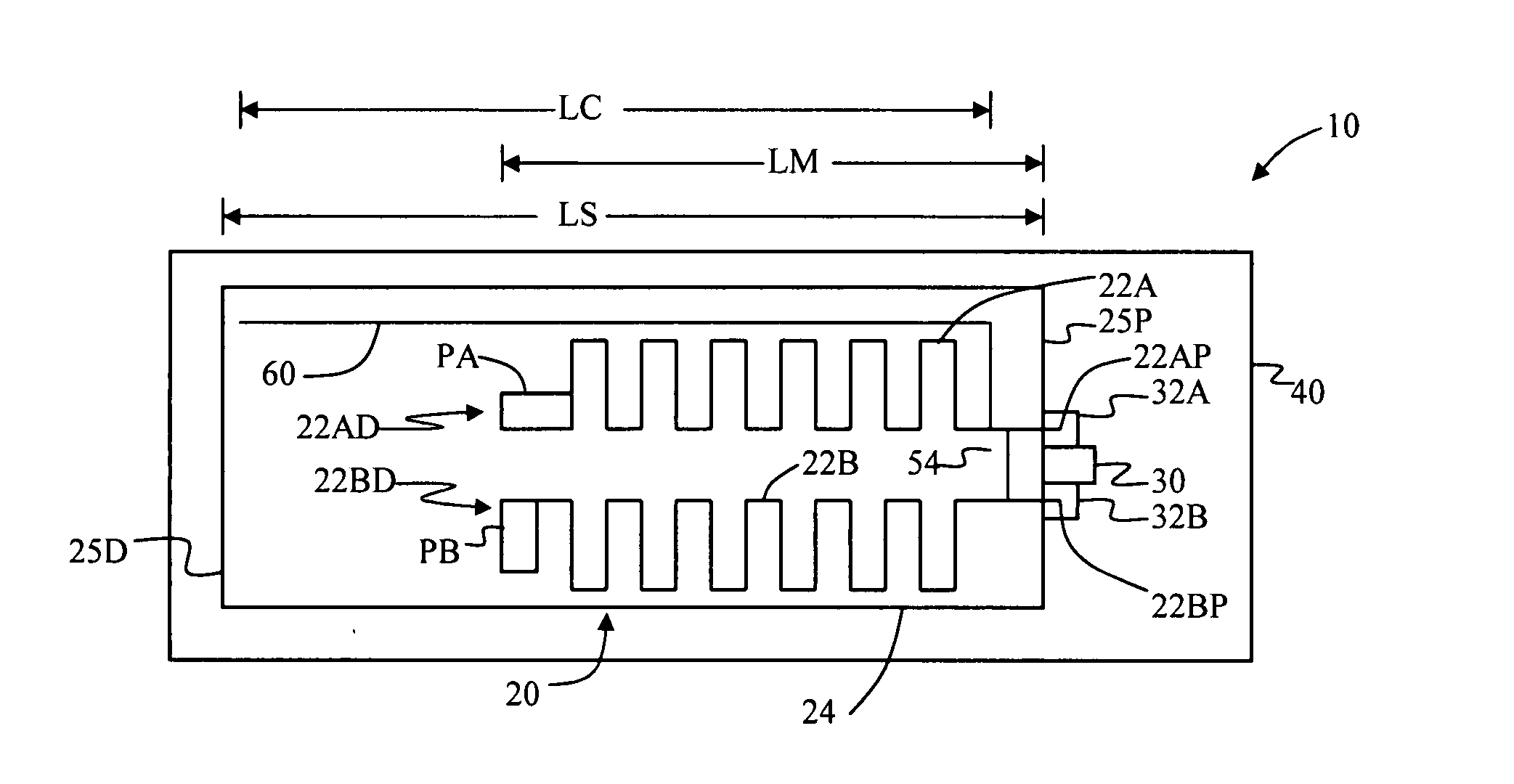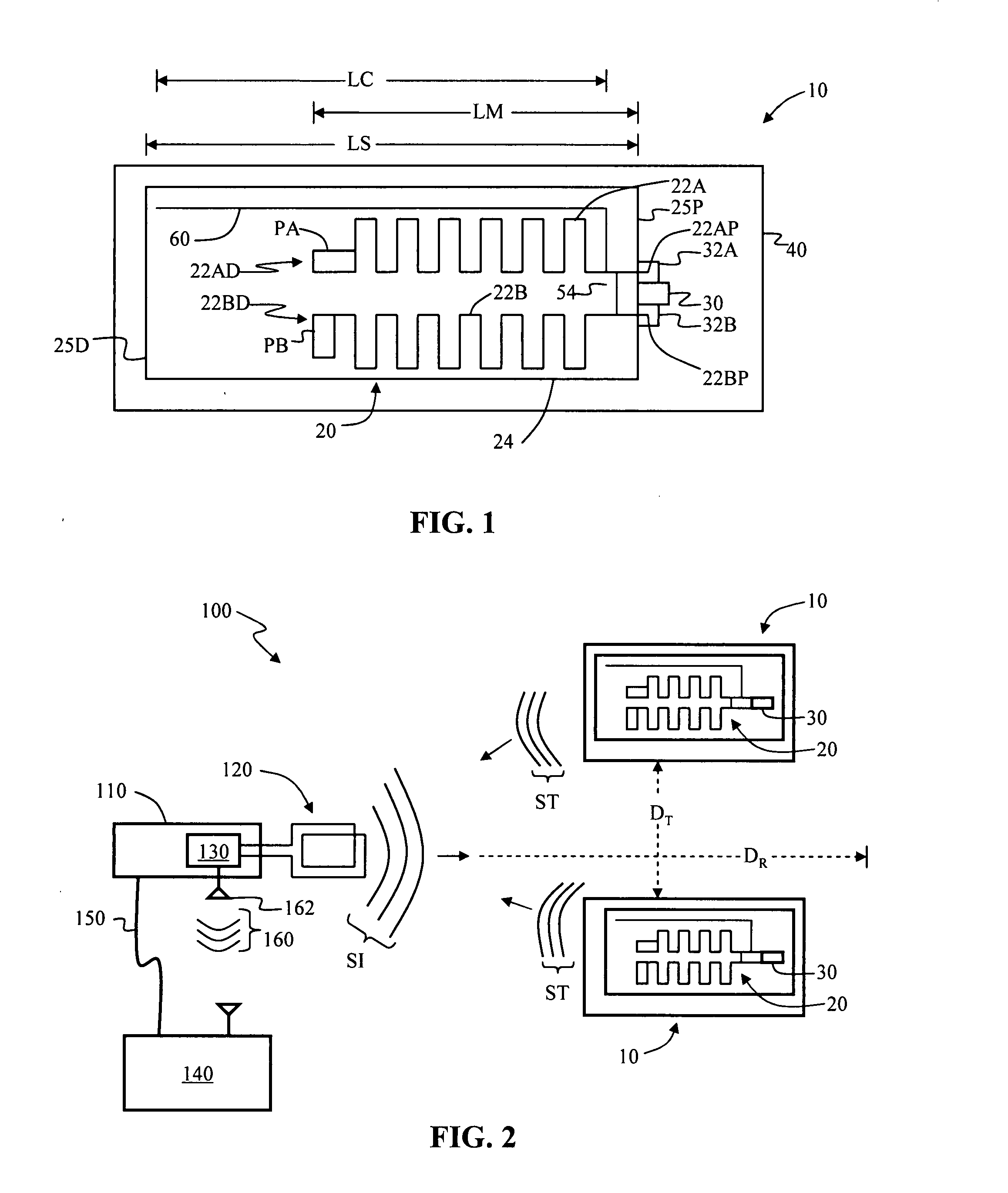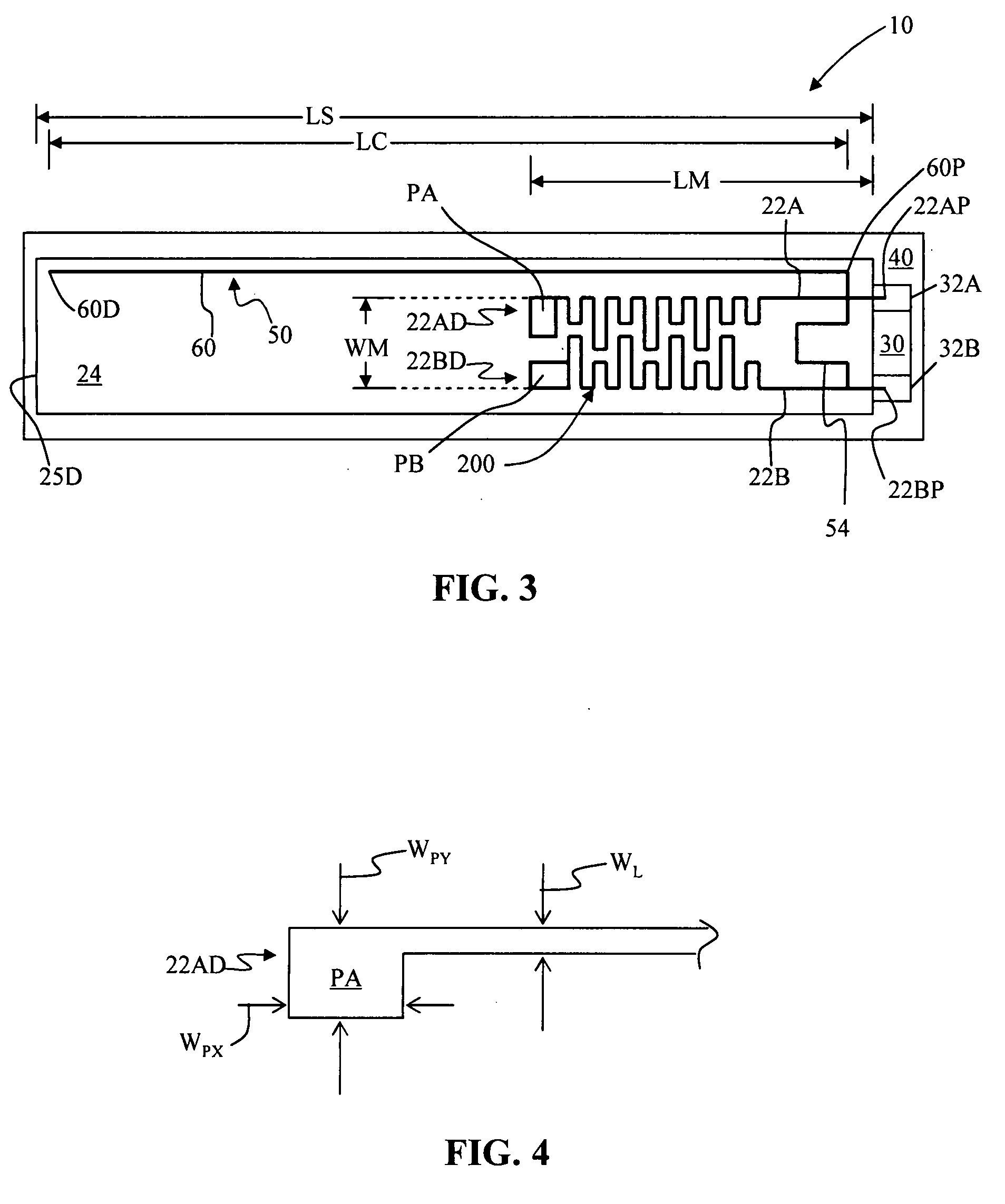Antenna systems for passive RFID tags
a technology of passive rfid and antenna system, which is applied in the direction of resonant antenna, burglar alarm mechanical actuation, instruments, etc., can solve the problems of inacceptable performance sensitivity, and achieve the effect of facilitating impedance matching
- Summary
- Abstract
- Description
- Claims
- Application Information
AI Technical Summary
Benefits of technology
Problems solved by technology
Method used
Image
Examples
antenna example embodiments
[0037]FIG. 3 is a schematic plan view of an example embodiment of antenna 20 according to the present invention as used in a passive RFID tag 10 according to the present invention. Generally, antenna 20 includes at least one serpentine antenna element, and the example embodiment of FIG. 3 includes two serpentine antenna elements 22A and 22B. In an example embodiment, serpentine antenna elements 22A and 22B are in the form of antenna traces (e.g., metallic conducting lines) that run in the same direction (and in this sense are “parallel”), namely in the long direction of antenna substrate 24 and away from the corresponding antenna feed points 32A and 32B. In an example embodiment, antenna elements 22A and 22B are formed from a conducting metallic material such as conductive ink, metal, etc., using standard techniques.
[0038]In an example embodiment, antenna elements 22A and 22B respectively include flat contact areas (“antenna pads”) PA and PB at their respective distal ends 22AD and ...
PUM
 Login to View More
Login to View More Abstract
Description
Claims
Application Information
 Login to View More
Login to View More - R&D
- Intellectual Property
- Life Sciences
- Materials
- Tech Scout
- Unparalleled Data Quality
- Higher Quality Content
- 60% Fewer Hallucinations
Browse by: Latest US Patents, China's latest patents, Technical Efficacy Thesaurus, Application Domain, Technology Topic, Popular Technical Reports.
© 2025 PatSnap. All rights reserved.Legal|Privacy policy|Modern Slavery Act Transparency Statement|Sitemap|About US| Contact US: help@patsnap.com



